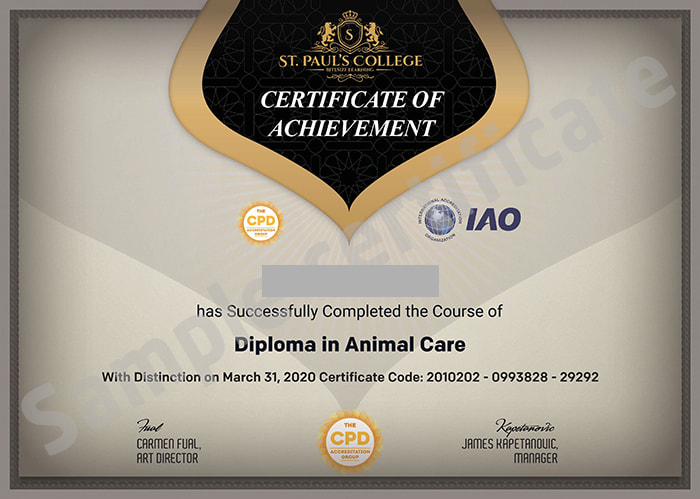- Duration / Course length: Upto 5 Days Start now
- Accredited by: CPD Qualification Standards
- Certificates:
- Course delivery: This course is delivered in video format
Course details
In the realm of office administration and secretarial roles, professionals often serve as the initial and final point of contact for clients. Understanding the responsibilities inherent in these roles is crucial, as it encompasses preparing meetings, organizing office procedures, handling orders and bills, ensuring accurate numerical data, overseeing cash flow, and managing accounts.
The Office Administration & Secretarial Diploma course is an ideal choice for individuals seeking roles in administrative support. It provides practical insights into organizing office activities for efficiency and compliance with company policies. The course covers overseeing administrative staff, allocating charges to ensure smooth operations. Key skills developed include building professional relationships, customer care, workload prioritization, decision-making, effective communication, questioning and answering techniques, and stress management. This course equips participants with essential knowledge and skills required for efficient task performance in administrative roles.
Office Administration & Secretarial Diploma Course Learning Outcomes:
- Develop proficiency in organizing office activities for efficiency and compliance.
- Gain practical knowledge of meeting preparation and office procedure organization.
- Acquire skills in handling orders, bills, and ensuring accuracy in numerical data.
- Learn effective cash flow control and account management techniques.
- Understand the responsibilities of overseeing administrative staff and allocating charges.
Admin Support
- Module One – Getting Started
- Module Two – Getting Organized (I)
- Module Three – Getting Organized (II)
- Module Four – Managing Time
- Module Five – Getting It All Done On Time
- Module Six – Special Tasks
- Module Seven – Verbal Communication Skills
- Module Eight – Non-Verbal Communication Skills
- Module Nine – Empowering Yourself
- Module Ten – The Team of Two
- Module Eleven – Taking Care of Yourself
- Module Twelve – Wrapping Up
- Module One – Getting Started
- Module Two – Why Your Office Needs Administrative Procedures
- Module Three – Gathering the Right Tools
- Module Four – Identifying Procedures to Include
- Module Five – Top Five Procedures to Record
- Module Six – What to Include in Your Binder (I)
- Module Seven – What to Include in Your Binder (II)
- Module Eight – Organizing Your Binder
- Module Nine – What Not to Include in the Procedure Guide
- Module Ten – Share Office Procedure Guide
- Module Eleven – Successfully Executing the Guide
- Module Twelve – Wrapping Up
- Module One – Getting Started
- Module Two – Remove the Clutter
- Module Three – Prioritize
- Module Four – Scheduling Your Time
- Module Five – To Do Lists
- Module Six – Paper and Paperless Storage
- Module Seven – Organization in Your Work Area
- Module Eight – Tools to Fight Procrastination
- Module Nine – Organizing Your Inbox
- Module Ten – Avoid the Causes of Disorganization
- Module Eleven – Discipline is the Key to Stay Organized
- Module Twelve – Wrapping Up
- Module One – Getting Started
- Module Two – Working with Your Manager
- Module Three – Administrative Soft Skills
- Module Four – Effective Time Management
- Module Five – Meeting Management
- Module Six – Tools of the Trade (I)
- Module Seven – Tools of the Trade (II)
- Module Eight – Being an Effective Gatekeeper
- Module Nine – Organizational Skills
- Module Ten – Confidentiality Guidelines
- Module Eleven – Special Tasks
- Module Twelve – Wrapping Up
- Module One – Getting Started
- Module Two – Working with Words
- Module Three – Constructing Sentences
- Module Four – Creating Paragraphs
- Module Five – Writing Meeting Agendas
- Module Six – Writing E-mails
- Module Seven – Writing Business Letters
- Module Eight – Writing Proposals
- Module Nine – Writing Reports
- Module Ten – Other Types of Documents
- Module Eleven – Proofreading and Finishing
- Module Twelve – Wrapping Up
- Module One – Getting Started
- Module Two – What Does Self-Confidence Mean To You
- Module Three – Obstacles to Our Goals
- Module Four – Communication Skills
- Module Five – The Importance of Goal Setting
- Module Six – Feeling the Part
- Module Seven – Looking the Part
- Module Eight – Sounding the Part
- Module Nine – Powerful Presentations
- Module Ten – Coping Techniques
- Module Eleven – Dealing with Difficult Behavior
- Module Twelve – Wrapping Up
- Module One – Getting Started
- Module Two – Opening
- Module Three – Working with the Interface
- Module Four – Your First Document
- Module Five – Basic Editing Tasks
- Module Six – Basic Formatting Tasks
- Module Seven – Formatting Paragraphs
- Module Eight – Advanced Formatting Tasks
- Module Nine – Working with Styles
- Module Ten – Formatting the Page
- Module Eleven – Sharing Your Document
- Module Twelve – Wrapping Up
- Word for Newbies – Activities
- Module One – Getting Started
- Module Two – Opening PowerPoint
- Module Three – Working with the Interface
- Module Four – Your First Presentation
- Module Five – Working with Text
- Module Six – Formatting Text and Paragraphs
- Module Seven – Adding Pictures
- Module Eight – Advanced Formatting Tasks
- Module Nine – Working with Transitions and Animations
- Module Ten – Setting Up Your Slide Show
- Module Eleven – Showtime!
- Module Twelve – Wrapping Up
- PowerPoint Essential Activities
- Module One – Getting Started
- Two – Opening Excel
- Three – Working with the Interface
- Four – Your First Worksheet
- Five – Viewing Excel Data
- Six – Building Formulas
- Seven – Using Excel Functions
- Eight – Using Quick Analysis
- Nine – Formatting Your Data
- Ten – Using Styles, Themes, and Effects
- Eleven – Printing and Sharing Your Workbook
- Twelve – Wrapping Up
- Excel for Newbies – Activities
Updated on 06 December, 2023
Eligibility / Requirements
Anyone Can Enrol in this Counseling Course
Job roles this course is suitable for:
Office Administrator , Executive Assistant , Secretary , Personal AssistantAbout St. Paul's College
With a rapidly growing international presence, we are a U.K. based provider of online courses. Not only are these courses aimed at the broad spectrum of individuals looking to acquire a qualification in order to boost their skills and expertise, but also at businesses. In addition to helping countless individuals, we also offer a range of services to many different types of organisation. Our courses help people and businesses become the best they can be, adding value and driving professional development forward.We are aware that many individuals and companies are unable to access the right courses or training packages to meet their needs. As an online learning platform, we wish to offer the best possible solution to this problem, providing helpful and informative courses to individuals and comprehensive training packages to businesses.





